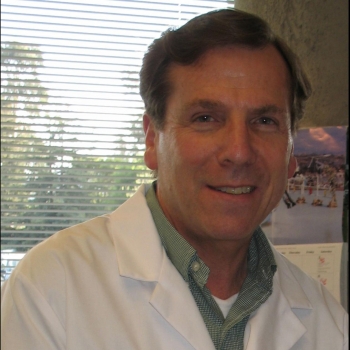Current Research and Scholarly Interests
Our research program focuses on lung growth and development, and the adverse impact of prolonged mechanical ventilation on the incompletely formed lung, which in very premature infants often leads to a life-threatening condition that was first described as bronchopulmonary dysplasia (Northway WH Jr et al, Stanford University, New Engl J Med 276: 357-368, 1967). This form of neonatal chronic lung disease is the leading cause of long-term hospitalization and recurrent respiratory disorders seen in tiny infants who have been born at less than 28 weeks of gestation. Failed alveolar formation and excess, disordered lung elastin are prominent histological features of this disease, which in some ways resembles adult emphysema. We study the effects of mechanical ventilation, with either air or 40% O2, on genes and proteins that regulate lung growth and development in newborn mice, whose alveoli and pulmonary capillaries form mainly after birth at term gestation. As elastin plays a crucial role in lung growth and development (elastin-null mice die soon after birth from cardiorespiratory failure related to defective alveolar and lung vascular formation), we are especially interested in studying the effects of prolonged mechanical ventilation (cyclic lung stretch) with O2-rich gas (which is often needed to sustain life of extremely premature infants) on genes that regulate elastin synthesis and assembly, which in turn can affect lung septation and angiogenesis. We currently study the effects of lengthy mechanical ventilation on lungs of mutant newborn mice that have defects in elastin assembly and associated abnormalities of lung structure. Because mechanical ventilation of the developing lung can induce the release of proteolytic enzymes that break down elastin, we recently began to study the effects of mechanical ventilation with O2-rich gas in a transgenic mouse that over-expresses elafin, a potent inhibitor of serine elastase activity. We think that these studies will pave the way for novel and effective strategies to treat or prevent neonatal chronic lung disease, and perhaps other respiratory disorders that exhibit similar pathological features in older children and adults.


